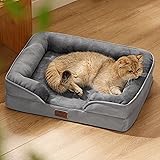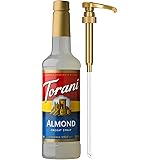Unlocking the Secret: Why Your Cat’s Kneading Habit Is More Than Just Cuteness—It’s a Window Into Their Deepest Instincts!
There you are, sprawled out on the couch, the perfect picture of Sunday relaxation—when suddenly, out of nowhere, your cat hops up and starts pressing those paws into your favorite blanket (or, oh dear, your tummy) like they’re whipping up dough for the world’s finest sourdough. Adorable? Absolutely. But why on earth are they kneading you as if you were some sort of plush bakery? It’s one of those quirky cat behaviors that’s both baffling and heart-melting, leaving me wondering: what’s really going on behind those rhythmic paw presses? Are they marking territory? Comfort-seeking? Just reminiscing about their kitten days? Believe me, it’s not as random as it looks — there’s a whole cozy, instinctual story behind every knead. So, while your couch may not have passed any knead-tests, let’s unpack this furry ritual with a pinch of curiosity, a dash of science, and all the paw-sitive vibes your feline friend deserves. LEARN MORE
You’re stretched out on the couch, and here comes your cat, climbing aboard, kneading away like they’ve got a sourdough starter on deadline, purring with the satisfaction of a five-star baker. It’s adorable, but also somewhat unusual.
You’re not a bakery, and that blanket (or your stomach) wasn’t knead-tested. Why do cats knead, and why do they always pick the softest target? Let’s dig into this cozy little ritual with a dose of curiosity and just the right sprinkle of paw-sitive science.
What’s Cat Kneading and its Purpose? 🐈
Cat kneading is a rhythmic motion where your cat presses its front paws into a soft surface. Blankets, cushions, and laps tend to be the preferred targets. The movement looks like dough preparation, which inspired the name.
While it may appear simple, kneading carries emotional depth and instinctual purpose. It reflects a sense of ownership and behaviors rooted in early kittenhood.
Kneading may look like an adorable pastry performance, but it’s packed with instinct and emotion.
Here’s why your cat might be paw-pressing everything in sight, yes, even you.
1. Comfort and Contentment 🐱
One of the primary reasons cats knead is to express comfort and contentment. When your cat kneads you or a soft surface like a blanket, it’s akin to a happy sigh in the feline world. This rhythmic motion signifies that they feel safe, warm, and relaxed.
2. Marking Territory 🐈⬛
Cats have scent glands in their paws, and when they knead, they leave behind their unique scent, claiming space in much the same way they do with a favorite cardboard box. This helps them mark their territory, signaling that a particular spot is theirs. It’s an instinctual behavior rooted in their ancestry as solitary hunters.
3. Reliving Kittenhood 🐾
Kittens knead their mother’s belly while nursing to stimulate milk flow. Adult cats may continue this behavior to reminisce about their cozy, nourishing kittenhood. It’s a comforting and nostalgic act for them.
4. Nurturing Instinct 😺
Some cats display kneading behavior when they feel particularly caring or nurturing. They might knead a blanket or your lap when in a motherly or protective mood, even if they haven’t had their kittens.
5. Self-Soothing ฅᨐฅ
Cats often knead when they’re feeling stressed or anxious. That rhythmic motion can soothe your cat during changes, in the same way our blog on cat sleep between my legs explores comfort habits.

If your cat has experienced a change in their environment or routine, they may knead more frequently.
6. Preparing a Bed 🐈
Cats would knead the ground or vegetation in the wild to create a comfortable resting spot.
This instinct to prepare a cozy bed can carry over to your furniture or lap. Your cat might be kneading to make their chosen spot more comfortable.
7. Stretching Muscles 🐈
Kneading also serves as a form of muscle stretching for cats. This action helps them keep their muscles toned and flexible. You might notice your cat kneading after a nap or when they first wake up.
8. Seeking Attention 🐈⬛
Cats are known for their clever ways of getting your attention. Some cats knead to draw you closer, almost like saying, “Look at me; I’m adorable and deserve pets and cuddles!”
9. Pure Happiness 🐱
Cats often knead when in a state of pure contentment and bliss. It’s their way of displaying joy and affection in the same easy way they respond to things they love, like getting pet, warm laps, or favorite toys; a relaxed, purring demeanor usually accompanies it.
10. Playfulness 😻
Kneading can also be a form of play for some cats. They may knead their toys or a favorite blanket during playful moments, expressing excitement and enjoyment.
11. Habit 🐾
For some cats, kneading becomes a habit. They may have started it for one reason and continued because it feels familiar and comforting. It’s a natural behavior that can become ingrained in their routine.
12. Expression of Trust 😻
When a cat kneads while making eye contact with you, it’s a clear sign of trust and a desire for closeness. Your cat is sharing an intimate moment with you and indicating their bond.
What Does Cat Kneading Say About Your Relationship? ❤️
When your cat climbs into your lap and starts kneading like dough is on the line, it means something. That motion signals trust. Most cats reserve it for the people they know well.

You might hear a soft purr, see a slow paw rhythm, and catch a calm stare while they press into your legs. These cues carry weight in their quiet way. They speak of comfort and safety.
It’s best to stay relaxed during these moments. A slow blink or light pet shows you’re in sync. Cats respond to that kind of stillness. When they find peace in it, they’ll come back to it again and again.
You’ll notice a pattern over time. Kneading happens during familiar parts of the day, quiet evenings, calm mornings, or just after you walk in the door. These aren’t random acts. They’re small but lasting signs that your cat trusts you completely.
How to Respond to Cat Kneading 🐾
Responding to your cat’s kneading behavior is essential to fostering a strong and trusting relationship. Here are some ways to interact with your cat when they knead:
1. Petting and Affection 💖
If your cat kneads you and seems content, respond with gentle petting and affection. Stroke their head, back, or chin, and let them know you appreciate their cuddly behavior.
2. Playtime 🐱
Sometimes, cats knead during play. Join the fun by engaging in interactive play sessions using toys like feather wands or laser pointers.
3. Provide a Soft Surface 🐈
Offer your cat a soft blanket or cushion if they prefer kneading on objects.

This can be especially helpful if their kneading becomes uncomfortable for you.
4. Respect Their Boundaries 🐱
If your cat kneads and you notice they’re sensitive to your touch or become agitated, respect their boundaries. Cats, like humans, have varying levels of tolerance for physical contact.
What to Do When Your Cat’s Claws Hurt You 🐾
Kneading may look charming, but sharp claws can turn that soft paw press into a scratchy surprise. If your cat’s biscuit routine starts to sting, it’s time to create a little comfort cushion for both of you.
Trim Their Claws 🐾
Keep your cat’s nails trimmed to soften the impact. A quick clip every couple of weeks can make a big difference. Use cat-friendly clippers and take your time. A calm setup helps most cats stay relaxed during the trim.
Use a Soft Barrier ☁️
Layer a thick blanket or a folded towel across your lap before the kneading starts. This keeps your cat close without turning the moment into a prickly experience. Go with textures your cat already finds cozy.
Redirect Their Attention 🐈⬛
If the kneading gets too enthusiastic, gently nudge them toward a plush toy or a favorite blanket.

Over time, they may begin to choose that surface instead of you, especially if paired with a cozy item from a cat subscription box. A soft voice and a few calm strokes help reinforce the switch.
The Meaning Behind Your Cat’s Kneading 😺✨
Cats knead to mark what matters. Sometimes that’s your lap, sometimes it’s a well-worn blanket that now belongs to them. This motion isn’t random. It traces back to kittenhood, nursing habits, and instincts that shaped them before they opened their eyes.
When your cat presses into you with slow, steady paws, it signals a mix of trust, comfort, and a strong connection to their surroundings. It’s not just behavior; it’s how they ground themselves.
To understand your cat better—or connect with breeders who meet high standards of care—explore our breeder verification process at American Paws Club.

FAQs
Do male and female cats knead equally?
Male and female cats can both knead, but the frequency and intensity may vary between individuals. Kneading is commonly associated with kittenhood and is not gender-specific.
Do cats in the wild exhibit kneading behavior?
Wild cats, such as lions and tigers, also exhibit kneading behavior. It’s an instinct that begins in kittenhood when they knead their mother’s belly to stimulate milk flow. In the wild, adult cats may knead surfaces to mark their territory.
How early do kittens start kneading behavior?
Kittens typically start kneading behavior as early as a few weeks old. This instinctual behavior begins during nursing, and it’s something you’ll often notice in young kittens for sale, and can continue into adulthood as a self-soothing habit.
Can cat kneading be a sign of stress or anxiety?
Cat kneading can be a sign of stress or anxiety. It’s a behavior carried over from kittenhood, offering comfort. If your cat suddenly kneads excessively, it may indicate underlying stress. Consider a quick online vet consultation to ease your mind and get expert guidance.
Can cats knead while they are asleep?
Cats typically do not knead while they are asleep. Kneading is a conscious behavior, often seen when they are awake and content. Sleep usually involves relaxed, motionless periods for cats.
Is it possible to stop a cat from kneading if it becomes problematic?
It’s possible to discourage kneading behavior in a cat if it becomes problematic. You can use positive reinforcement by gently redirecting their attention to a toy or providing a soft blanket as an alternative.




















Post Comment